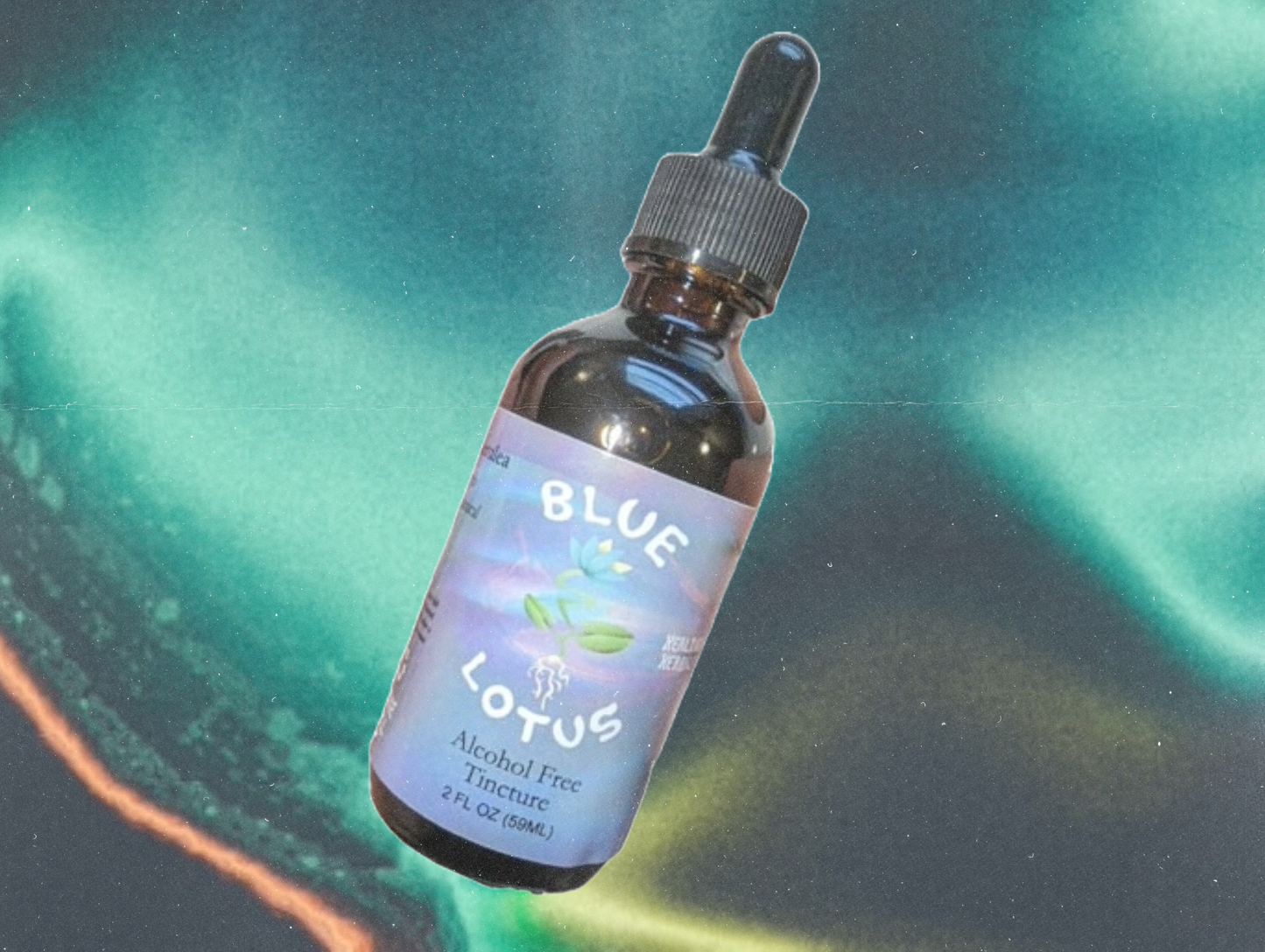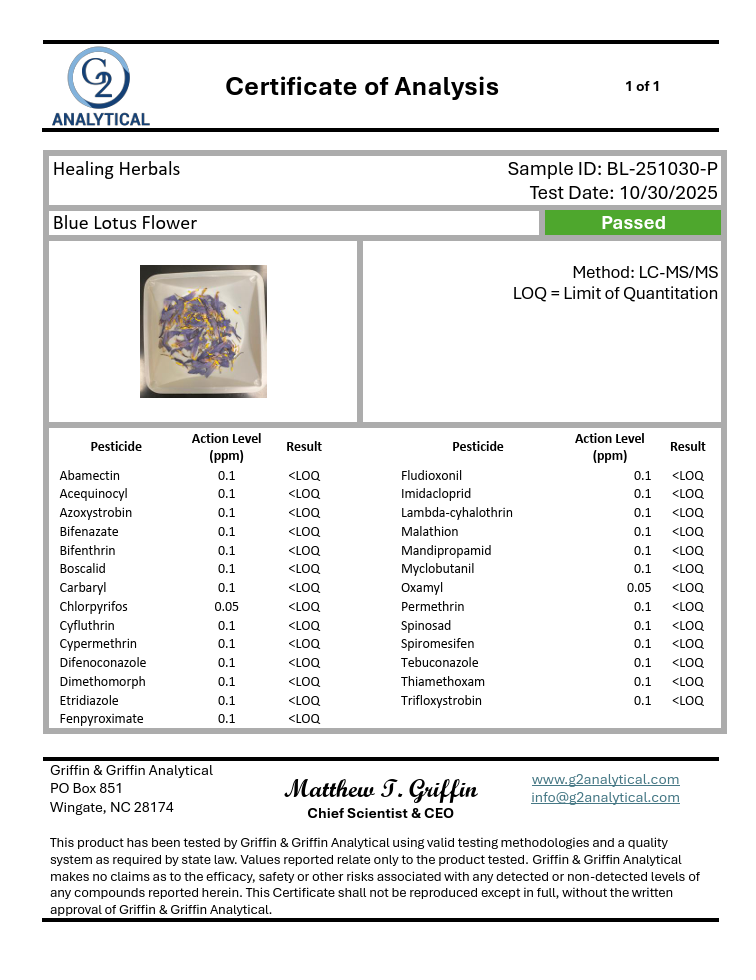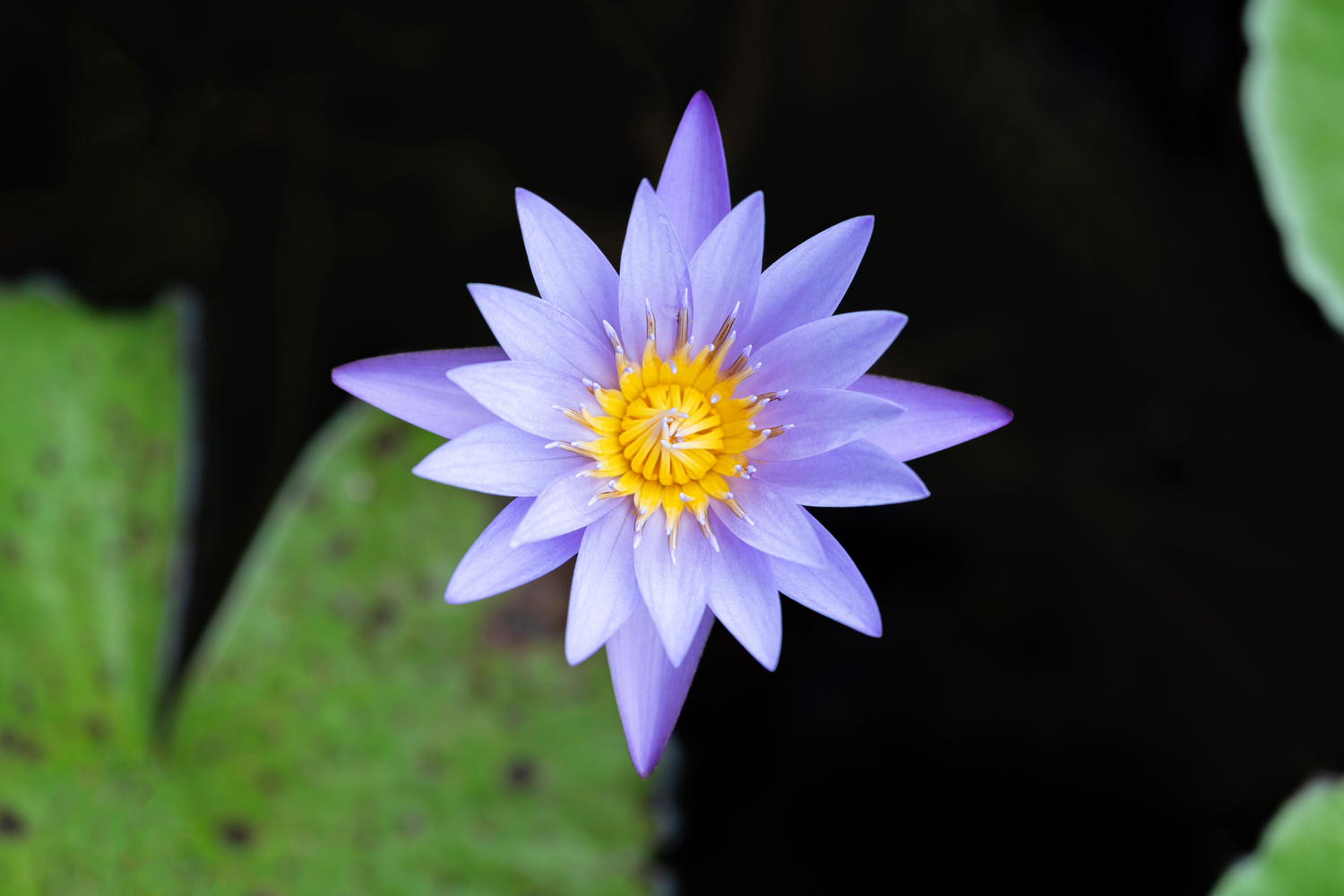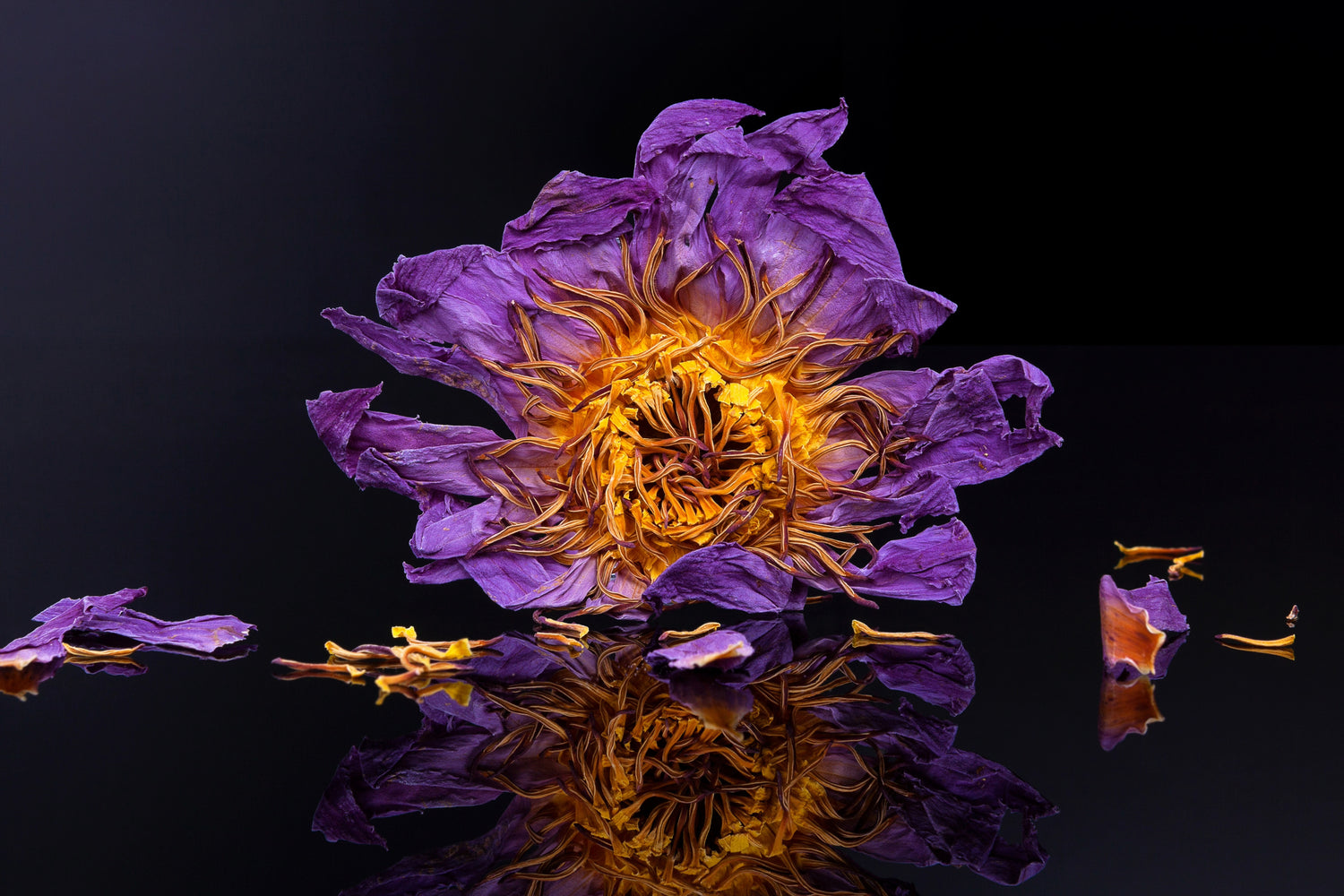
Healing Herbals
Blue Lotus Tincture Alcohol Free 2 oz
Blue Lotus Tincture Alcohol Free 2 oz
Couldn't load pickup availability
Blue Lotus Tincture – Alcohol-Free (2 oz)
Product Description & Potency Levels
Our Blue Lotus Tincture (Nymphaea caerulea) is made by carefully steeping dried blue lotus flowers in vegetable glycerin, creating a smooth, alcohol-free extract. Each 2 oz bottle is crafted with 14 grams of blue lotus flowers and comes with a dropper for simple measuring and use.
Three full droppers (about 3 ml) equal approximately 0.75 g of dried flower.
3–9 ml (3–9 droppers), with adjustments based on personal preference.
History
Blue lotus, also known as the blue Egyptian lotus, blue water lily, or sacred blue lily, has held a place of reverence for centuries. It appears in Egyptian iconography and has been noted in cultural traditions where it was valued for its symbolic and ceremonial uses.
Usage / Directions
- Use the included dropper to measure desired serving.
- May be taken directly under the tongue or added to water, tea, or juice.
- Start with a lower amount to gauge personal preference before adjusting.
Ingredients
- Blue Lotus Flowers (Nymphaea caerulea)
- Vegetable Glycerin (alcohol-free base)
FDA Disclaimer
This product has not been evaluated by the Food and Drug Administration. It is not intended to diagnose, treat, cure, or prevent any disease.
Share


I wanted to get the blue lotus experience without making tea. The tincture works fast, tastes great, and super convenient.
I've tried several different Blue Lotus tinctures, and although some of them might compare, this one is still easily the most potent and high quality that I've ever had!

Blue Lotus & Quality
Healing Herbals works closely with small family lotus farms and through sustainable and ethical
sourcing of Nymphaea caerulea. Our sources always grow organically, avoiding heavy synthetic fertilizers. Our blue lotus flowers come from well-managed farms or sustainably maintained wild ecosystems
on private lands.

History of Blue Lotus
Blue lotus, or Nymphaea caerulea, was highly valued in ancient Egypt, appearing in art, jewelry, and temple carvings. Its striking blue flowers symbolized the sun, creation, and rebirth, and it was often included in religious ceremonies along the Nile. The plant’s presence in tombs and artifacts highlights its cultural and spiritual significance throughout Egyptian history.
Over the last 2 thousand years this flower has been cultivated, bred and ecologically diversified to include several known cultivars and varieties including the Purple Thai, Egyptian Blue, and other subvarieties.


